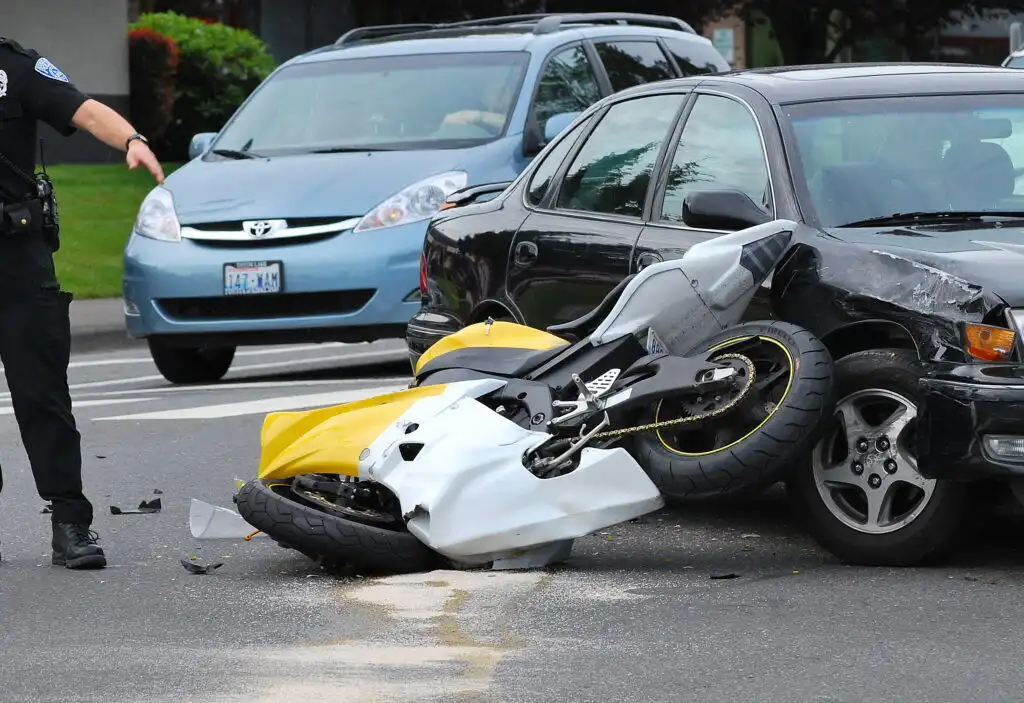Motorcycle accidents are known to be one of the most dangerous types of crashes on the road, and unfortunately, they often lead to fatalities. The lack of protection for riders—compared to those inside cars—means that when an accident occurs, the risk of severe injury or death is significantly higher. Understanding the statistics surrounding fatal motorcycle accidents is crucial for both riders and drivers, as it helps to highlight the risks involved and the factors that contribute to these tragic outcomes.
In this blog post, we will take a closer look at the numbers behind fatal motorcycle accidents, examine the key factors that contribute to them, and discuss what can be done to reduce these tragic incidents.
1. The Alarming Statistics: How Many Fatal Motorcycle Accidents Happen Each Year?
Motorcycle fatalities are a significant concern in traffic safety, especially considering that motorcycles represent only a small percentage of vehicles on the road. However, they account for a disproportionate number of road deaths.
Recent Data:
-
According to the National Highway Traffic Safety Administration (NHTSA), there were 5,579 motorcyclist fatalities in the United States in 2020, representing about 14% of all traffic-related deaths despite motorcycles making up just 3% of all registered vehicles.
-
Motorcycle fatalities have increased in recent years, with the NHTSA reporting a 5.6% increase in fatalities from 2019 to 2020.
This disparity highlights the heightened danger that motorcyclists face compared to passengers in cars, emphasizing the need for better safety protocols, awareness, and education.
2. What Are the Leading Causes of Fatal Motorcycle Accidents?
Understanding the causes behind fatal motorcycle accidents is critical to reducing fatalities. Several factors contribute to these crashes, ranging from rider behavior to environmental conditions and the actions of other road users.
1. Speeding
Speeding is one of the leading causes of fatal motorcycle accidents. High speeds reduce the amount of time available to react to hazards, increase stopping distances, and heighten the severity of collisions.
-
According to the IIHS, about 33% of all fatal motorcycle accidents involve speeding. This is a significant contributor to fatal crashes, particularly on highways and rural roads where riders often exceed speed limits.
2. Alcohol and Drug Use
Impaired riding due to alcohol or drugs is another major factor in fatal motorcycle accidents. Riders under the influence have slower reaction times, impaired judgment, and are more likely to take risks on the road.
-
The NHTSA found that about 25% of all motorcyclists involved in fatal accidents had a blood alcohol content (BAC) of 0.08% or higher. Alcohol impairs motor skills and cognitive abilities, making it particularly dangerous for riders navigating fast-moving traffic.
3. Lack of Helmet Use
Helmets are essential in protecting motorcyclists from severe head injuries in the event of a crash. Despite the proven life-saving benefits of wearing helmets, many riders still choose not to wear them.
-
According to NHTSA, wearing a helmet reduces the risk of a fatal head injury by 37%. However, the IIHS reports that in 2020, 42% of motorcyclists killed in accidents were not wearing helmets. This statistic underscores the importance of helmets in preventing fatalities.
4. Inexperience
Inexperienced riders are more likely to be involved in fatal accidents due to their lack of skills in handling their motorcycles, understanding traffic dynamics, and reacting to dangerous situations.
-
Riders who have held their licenses for less than a year are at a higher risk of being involved in fatal crashes, according to the Motorcycle Safety Foundation (MSF). Novice riders may misjudge speeds, road conditions, and other drivers, increasing the likelihood of a fatal accident.
5. Other Drivers’ Negligence
While riders must take precautions, many fatal motorcycle accidents are caused by the actions of other drivers on the road. Common causes include failure to yield, improper lane changes, and distracted driving.
-
The NHTSA estimates that in about 60% of fatal motorcycle crashes, the driver of the other vehicle was at fault. This includes situations where other drivers did not see the motorcyclist, or simply failed to observe the motorcyclist’s right of way.
3. Where Do Most Fatal Motorcycle Accidents Happen?
The location of motorcycle accidents plays a significant role in their severity. Certain areas and types of roads see more fatal crashes than others.
1. Rural vs. Urban Areas
Rural roads, where motorcyclists often ride at higher speeds, are more dangerous than urban areas. According to the IIHS, 55% of all fatal motorcycle crashes occur in rural areas. While rural areas offer scenic routes, they often have poorly maintained roads, sharp turns, and fewer traffic lights or signs, making it more difficult for riders to react to sudden hazards.
-
Urban areas, on the other hand, tend to have more traffic and tighter spaces, but speeds are generally lower, and there is greater visibility.
2. Time of Day and Weather Conditions
Time of day and weather conditions also play a role in fatal motorcycle accidents. The majority of fatal crashes occur during daylight hours (often between 3 p.m. and 6 p.m.), likely due to the increased amount of traffic and riding activity.
-
Weather conditions such as rain, fog, or snow can make road surfaces slippery and reduce visibility, contributing to higher accident rates. The NHTSA found that weather-related accidents make up a significant portion of fatal crashes, especially in colder months.
4. The Role of Motorcycle Safety Courses and Training
One effective way to reduce fatal motorcycle accidents is through proper rider training. Safety courses and rider education programs teach riders how to handle their bikes in various situations, avoid accidents, and respond appropriately to hazards.
Data Insights:
-
Riders who have completed a safety course are less likely to be involved in accidents, especially fatal ones. According to the IIHS, riders with training are involved in significantly fewer fatal accidents than untrained riders.
The MSF reports that proper training also increases the likelihood of helmet use, reducing head injuries in the event of a crash.
5. What Can Be Done to Reduce Fatal Motorcycle Accidents?
Addressing the issue of fatal motorcycle accidents requires a multi-faceted approach, involving the efforts of riders, drivers, policymakers, and law enforcement.
1. Improve Rider Education and Training
Motorcycle safety courses, better rider training, and mandatory helmet laws are proven methods for reducing fatalities. Educating riders about the risks and ensuring they are properly trained to handle their bikes can drastically reduce accidents.
2. Strict Enforcement of Safety Laws
Enforcing laws related to speeding, helmet use, and impaired riding is essential for keeping motorcyclists safe. More stringent penalties for driving under the influence of alcohol or drugs can discourage dangerous riding behaviors.
3. Enhanced Infrastructure
Improving road infrastructure, especially in rural areas, can help reduce fatal motorcycle accidents. Potholes, poorly lit areas, and hazardous road conditions should be addressed to ensure safer roads for all users.
4. Raising Awareness
Public awareness campaigns aimed at both motorcyclists and other drivers can help reduce fatalities. Promoting safe riding practices, the importance of wearing helmets, and watching out for motorcyclists can help reduce accidents caused by negligence.
Conclusion
Fatal motorcycle accidents are tragic and often preventable. By understanding the key factors that contribute to these crashes—such as speeding, alcohol impairment, lack of training, and mechanical failure—we can take steps to reduce their occurrence. Proper education, law enforcement, and safety gear can make a significant difference in reducing fatalities and ensuring that motorcyclists can enjoy the freedom of the open road more safely.
At MotorcycleAccidentStatistics.com, we believe that data-driven insights and a focus on safety can help make riding safer for everyone. By understanding the causes and patterns behind motorcycle accidents, we can work toward preventing future tragedies. Whether you’re an experienced rider or just starting, being informed about the risks and adopting safe riding practices can save lives.


